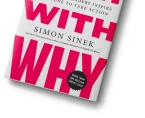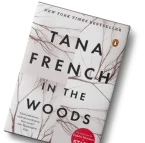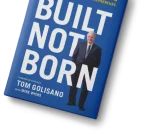
If plot is what happens, then theme is what it all means. Every great piece of literature isn’t just telling a story—it’s exploring something deeper: an idea, a struggle, a truth about being human. That’s the theme. And it’s the secret ingredient that makes a story linger long after the last page.
Whether you’re a reader trying to uncover what a book is “really about” or a writer aiming to craft a meaningful narrative, this guide will take you into the world of themes in literature—how they work, what they reveal, and how to master them.
What Is a Theme in Literature?
A theme is the central idea or message that runs through a piece of writing. It’s not what the story is about on the surface (that’s the plot), but what the story is trying to say underneath. A theme often reflects on human nature, society, morality, or the big questions of life.
Themes aren’t always stated outright. Instead, they emerge through what the characters say and do, the outcomes they face, the conflicts they wrestle with, and the world they inhabit. For example:
- A novel about a soldier returning from war might explore the trauma of violence.
- A poem about a sunset could reflect on impermanence or beauty lost to time.
Themes give stories emotional and intellectual weight. They help us relate, reflect, and sometimes even change.
Write Stories That Truly Mean Something
Estorytellers helps authors craft books with strong themes that inspire, connect, and last forever.
Start Writing with Purpose20 Powerful Themes in Literature (with Fresh Examples)
Here are 20 of the most impactful and recurring themes in literature, each with a fresh take and illustrative example that goes beyond the textbook classics:
1. Identity
Who am I? How do I become who I am? Identity is at the heart of many coming-of-age stories.
Example: In “The Namesake” by Jhumpa Lahiri, Gogol’s struggle with his name mirrors his journey to embrace both his Indian heritage and American upbringing.
2. Freedom vs. Control
What does it mean to be free? And what happens when that freedom is taken away?
Example: In “The Testaments” by Margaret Atwood, three women navigate life under a theocratic regime, and what it means to reclaim autonomy.
3. Love and Loss
Love may be the most timeless theme of all, but its power is often clearest when it’s lost.
Example: In Ocean Vuong’s “On Earth We’re Briefly Gorgeous”, love is tender, complicated, and often tangled in grief and longing.
4. Power and Corruption
What happens when those in charge lose their way—or never had it to begin with?
Example: In “The Power” by Naomi Alderman, women gain the ability to emit electric shocks. The story flips gender norms—and shows how power changes people, regardless of who holds it.
5. Survival
In desperate situations, who do we become?
Example: “The Martian” by Andy Weir turns survival into both science and spirit, as an astronaut fights to stay alive on Mars using wit and resilience.
6. Isolation
Being alone isn’t always physical—it’s emotional too.
Example: In “Eleanor Oliphant Is Completely Fine”, the titular character’s journey out of isolation is both heartbreaking and deeply human.
7. Justice and Injustice
When the scales are tipped, stories often rise.
Example: In “Just Mercy” by Bryan Stevenson, the true story of a lawyer defending death-row inmates becomes a moving exploration of systemic injustice.
8. Fear and Courage
Fear holds us back. Courage pushes us forward.
Example: “The Book of Joy” (Desmond Tutu & Dalai Lama) isn’t fiction, but it shows how even spiritual leaders face fear, and how joy can be a kind of courage.
9. Coming of Age
Growing up means losing illusions—and gaining truth.
Example: In “Persepolis” by Marjane Satrapi, a young girl grows up in revolutionary Iran, navigating history, politics, and womanhood.
10. Death and Rebirth
Endings are also beginnings.
Example: In “Lincoln in the Bardo” by George Saunders, Abraham Lincoln’s grief after his son’s death is explored through a liminal space between life and the afterlife.
Every Great Book Has a Theme
Let us help you define and develop powerful themes in your writing that elevate your entire book.
Let’s Write a Book That Resonates11. Hope and Despair
Hope fuels action. Despair paralyzes it.
Example: “Station Eleven” by Emily St. John Mandel shows that even after global catastrophe, art and human connection endure.
12. Prejudice and Empathy
Stories allow us to walk in another’s shoes.
Example: In “American Dirt” by Jeanine Cummins, a mother flees cartel violence in Mexico. The novel challenges readers to see migration as deeply human.
13. Truth and Illusion
What is real? And how do we know?
Example: “Life of Pi” by Yann Martel lets readers choose which version of truth they believe—an animal-filled fantasy or a brutal human reality.
14. Nature vs. Civilization
Sometimes, nature is refuge. Other times, it’s a threat.
Example: “Where the Crawdads Sing” by Delia Owens uses the North Carolina marsh as both setting and symbol for survival, self-sufficiency, and judgment.
15. Faith and Doubt
Belief gives comfort, but also invites questions.
Example: In “Gilead” by Marilynne Robinson, an aging pastor writes to his young son, reflecting on grace, doubt, and dying.
16. Technology and Humanity
What do our inventions say about us?
Example: “Klara and the Sun” by Kazuo Ishiguro tells the story of an AI companion who learns about love, loneliness, and sacrifice.
17. Family
Sometimes comforting, sometimes complicated—but always central.
Example: “Everything I Never Told You” by Celeste Ng peels back the layers of a seemingly perfect family after a tragedy.
18. Ambition
How far are we willing to go—and at what cost?
Example: “The Queen’s Gambit” by Walter Tevis traces the rise of a female chess prodigy whose brilliance nearly consumes her.
19. Forgiveness
Healing often begins with letting go.
Example: “The Kite Runner” by Khaled Hosseini follows a boy haunted by childhood betrayal, and his journey toward redemption.
20. Belonging
To be known. To be understood.
Example: In “Homegoing” by Yaa Gyasi, two family lines—one in Africa, one in America—trace centuries of loss and longing for home.
Turn Your Message Into a Masterpiece
Estorytellers guides you in weaving deep, unforgettable themes into stories readers truly remember.
Tell a Story That StaysThemes at Work in Literature
1. Power and Control in “Lord of the Flies”
A group of boys crash-land on an island. At first, they try to build society. Then the power struggle begins. Golding uses the island as a microcosm of civilization, exploring how quickly order collapses into chaos. The theme? Civilization is a fragile mask over human instinct.
2. Isolation in “The Bell Jar” by Sylvia Plath
Esther Greenwood seems to have it all—but inside, she’s unraveling. Plath explores isolation from others, from purpose, and from the self. The theme? Depression isn’t always visible, but it isolates even in crowds.
3. Love in Pablo Neruda’s Poetry
Neruda’s poems (especially in Twenty Love Poems and a Song of Despair) capture love in physical, spiritual, and political terms. Whether it’s joy or heartbreak, love is portrayed as elemental and overwhelming. The theme? Love is both passion and poetry, pain and permanence.
Theme vs Topic vs Motif vs Moral
| Concept | Definition | Example |
|---|---|---|
| Topic | What the story is about | War, friendship, growing up |
| Theme | The deeper meaning | War destroys innocence |
| Motif | Recurring element that supports theme | Repeated images of blood, music, or mirrors |
| Moral | Explicit lesson (often in fables) | “Don’t judge a book by its cover” |
Write Beyond Words—Write with Meaning
We help turn your ideas into books that not only entertain but move people through clear, powerful themes.
Make Every Word MatterWhy Do Themes Matter?
Themes are what make stories matter. Without a theme, a plot is just events. With a theme, those events mean something. Themes:
- Connect the story to the reader’s own life.
- Make stories feel universal.
- Invite reflection and discussion.
- Give writers direction and purpose.
If you want your story to stay with someone long after the last line, you need a strong theme.
Should You Plan Your Theme in Advance?
Writers approach the theme in different ways:
- Plan it early: Use the theme as a compass while writing.
- Discover it later: Let the theme emerge naturally, then refine it in editing.
- Both: Start with a loose theme, then clarify as you go.
There’s no wrong approach. What matters is that the final draft feels unified and meaningful.
How Estorytellers Can Help You Build Theme-Driven Stories
At Estorytellers, we work with writers at every stage to help uncover, strengthen, and refine the core themes in their work. Whether you’re writing fiction, nonfiction, poetry, or screenplays, our team can help you:
- Identify the emotional thread in your story.
- Layer your theme through plot, setting, and character.
- Avoid being too “on the nose” while still being clear.
Want help turning your good story into something unforgettable? Reach out to our editors or join our free community newsletter.
Conclusion
A theme isn’t just a literary device—it’s a story’s soul. It’s what transforms a series of events into a meaningful journey. The best writers know how to weave a theme that resonates with readers, and the best readers know how to find it.
So the next time you write or read a story, ask:
- What’s the story really about?
- What’s the emotional question it’s trying to answer?
- What idea does it keep returning to?
That’s the theme. And once you find it, you’ll never look at stories the same way again.






























